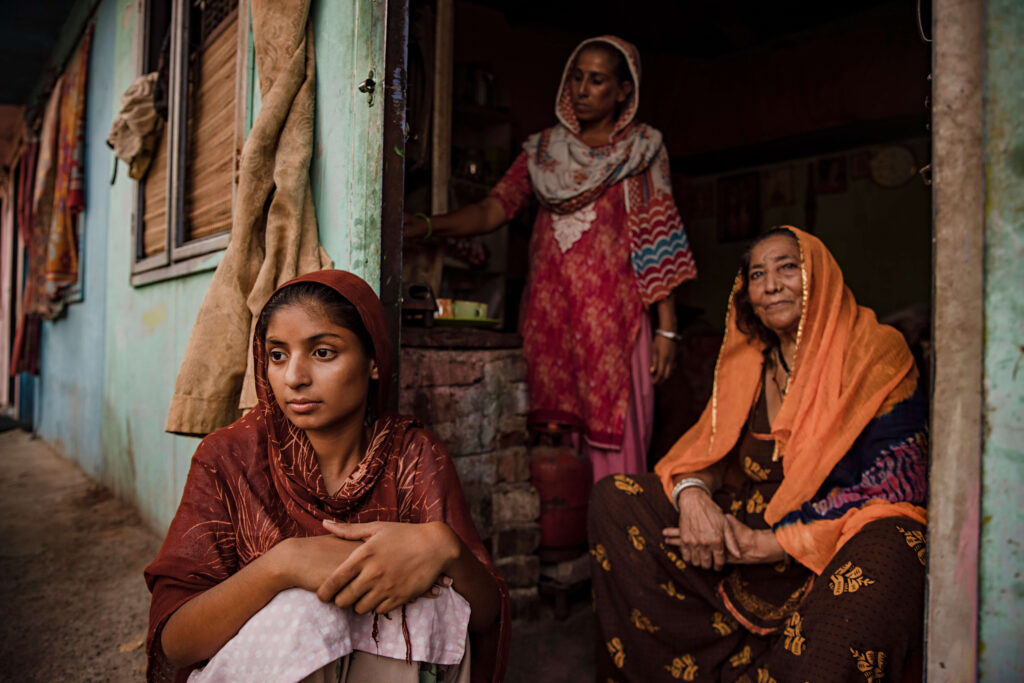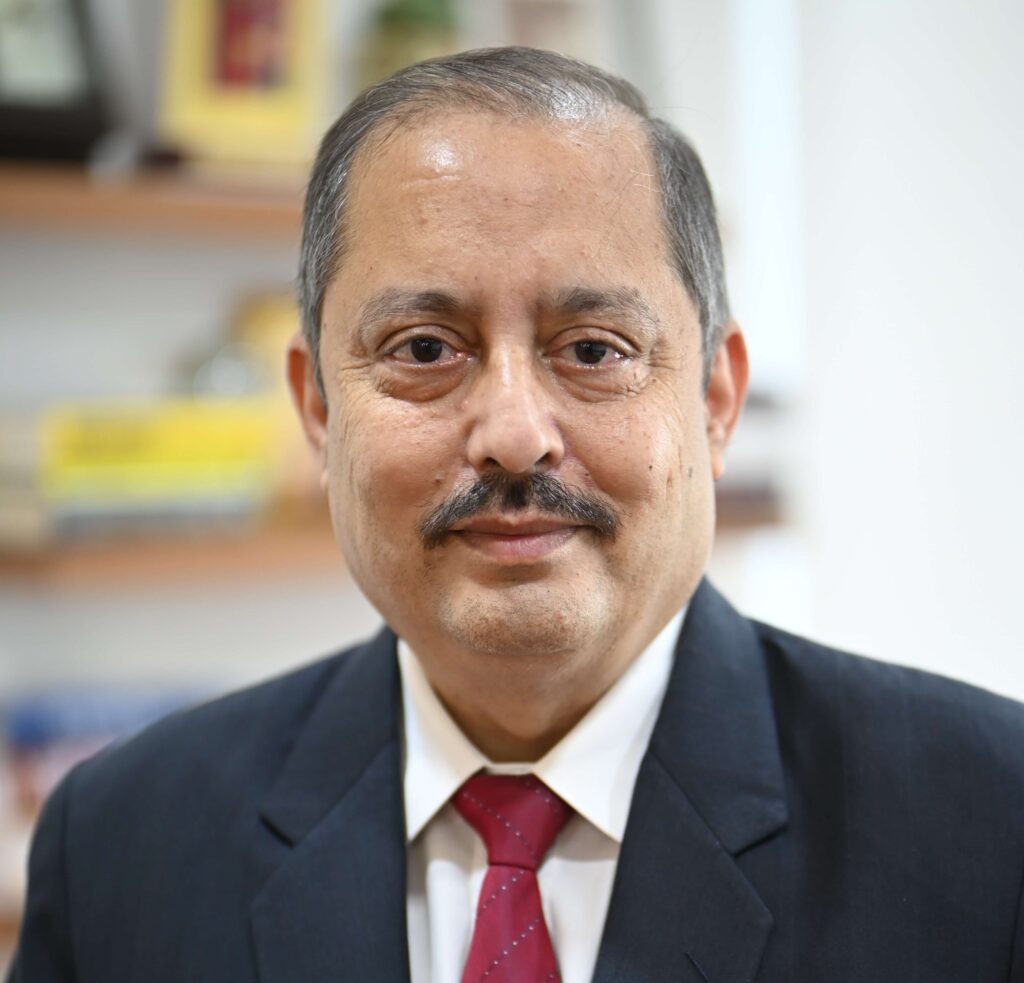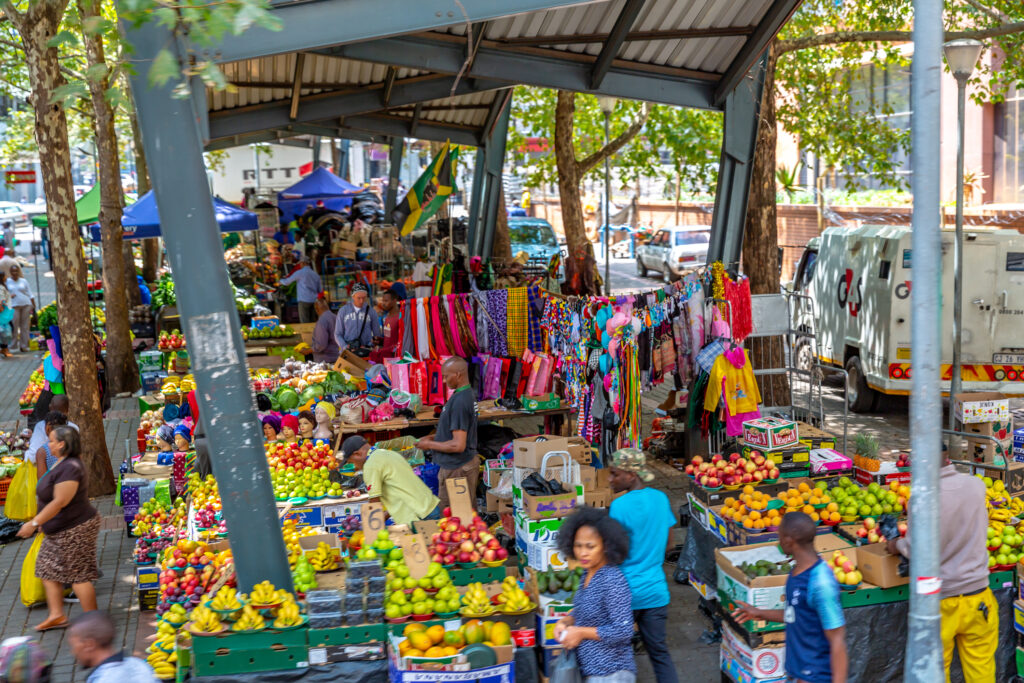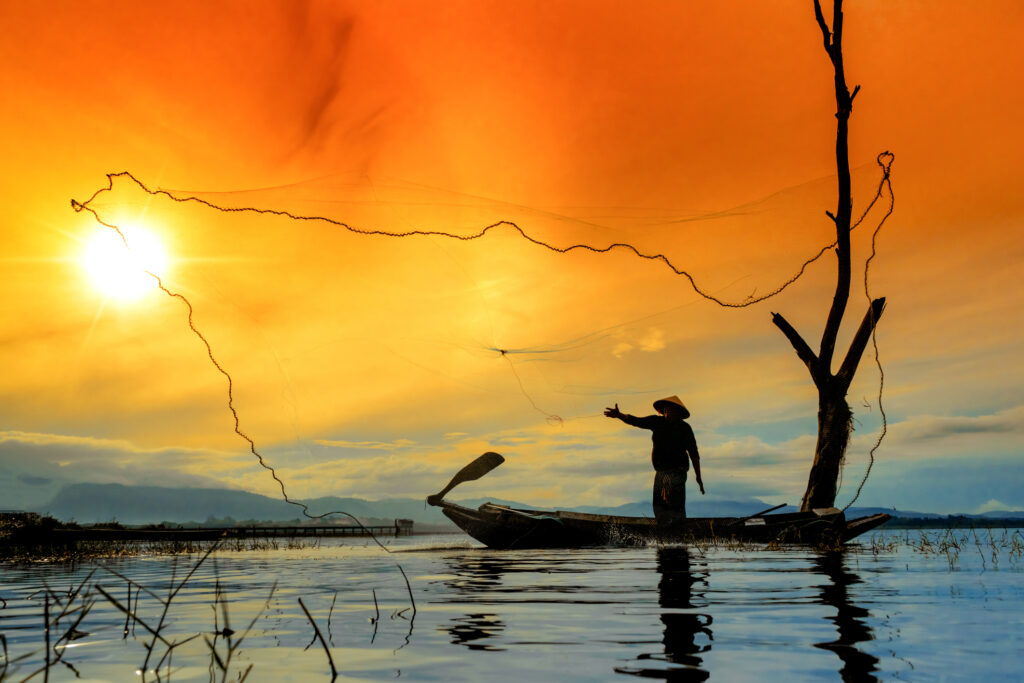
COVID-19 created extraordinary challenges for Indian households, businesses, and the economy. Lockdowns triggered economic contractions vastly surpassing the initial trade shocks, travel restrictions, and other measures. Millions of people migrated from urban to rural areas. The downturn rapidly reduced working hours and raised unemployment. The consequences and survival tactics for households and businesses varied by sector and state, exacerbating existing disparities for low-income and rural households.
These were among the challenges discussed by about two dozen leaders of microfinance organizations, impact investors, and analysts from around the world who convened recently at a workshop hosted by Lehigh University’s Martindale Center to share views on how financial inclusion interacted with the socio-economic crises of the pandemic. The event built on the success of a previous similar workshop that resulted in the publication of The Future of Microfinance by Brookings Institution Press in 2020.
This blog post is extracted from a more detailed Policy Brief.
Shock for Clients and MFIs
The pandemic triggered new challenges for both clients and microfinance institutions (MFIs). Evidence points to clients’ precipitous loss of income, depletion of meager savings, increasing indebtedness, and difficult coping strategies that risk pushing millions back into poverty. MFIs had to quickly adapt, which accelerated trends toward digitalization and virtual connectivity with clients. Households struggled to understand the implications of MFIs’ loan repayment moratoriums and confronted hard choices between daily needs, repaying loans, and conserving cash for an uncertain future.
Early in the outbreak, MFIs were hit hard. The microfinance model relies on frequent physical interaction with customers. Lockdowns brought operations to a standstill and repayments came under pressure, creating liquidity issues, particularly for non-bank (NBFC) MFIs.
The impact was stark:
- Disbursements from April to June 2020 fell to Rs 61.9 billion (~$800 million) compared to where they had been pre-COVID at Rs 711.9 billion (~$9.2 billion).
- Portfolio at risk (PAR) rose; PAR>30 days peaked at 22 percent in June 2021 and has improved considerably since.
- Unemployment jumped to 24 percent in 2021.
- The Periodic Labour Force Survey from July 2020–June 2021 showed a migration rate of 48 percent among urban women in India and 23 percent among urban males, more than half of whom returned to their rural homes; possibly the country’s worst reverse migration.
Policy Responses
The public sector led crisis response, mitigating damage and helping relaunch the economy. Since 2020, both the Reserve Bank of India (RBI) and the Government of India have taken critical actions for microfinance clients and institutions.
RBI’s twin approach included liquidity injection and restructuring. RBI allowed lenders to offer moratoriums on loan repayments and directed maintaining an account’s status in credit bureau reporting while in moratorium to protect customers’ credit histories and access to credit in the future. The moratorium severely stressed NBFC-MFIs. A survey amongst Microfinance Institutions Network (MFIN) members in June 2021 found NBFC-MFIs had moratorium for approximately one-third of repayment installments—creating tremendous pressure to manage liquidity given that NBFC-MFIs rely on customer repayments to repay their own debt obligations. And with fixed salary and infrastructure costs, most MFIs have little leeway to quickly change operational costs.
Non-bank MFIs had moratorium for approximately 1/3 of repayment installments, creating tremendous pressure to manage liquidity.
Additionally, the RBI’s August 2020 “Resolution Framework for COVID-19 Related Stress” was a one-time resolution for loans not in default beyond 30 days. And later, RBI allowed lenders to restructure individual and small business loans. Both resolutions provided much-needed relief to microfinance customers.
For MFIs, RBI also launched special liquidity de-stressing schemes and relaxed loan provisioning requirements. The Ministry of Finance supplemented the efforts with partial credit guarantees, an “ex-gratia” scheme to pay the difference between compound and simple interest for six months for specified loan types, and the PM Svanidhi scheme of lending and credit guarantees to assist street vendors. However, while helpful, these measures could not fully relieve lenders’ liquidity challenges.
The situation improved in September 2020 as customers’ repayments resumed. In parallel, policymakers recognized the significance of microfinance for inclusive growth, giving a strong recovery signal to the market.
But the microfinance sector entered the 2021–2022 financial year facing an uncertain and unprecedented impact of COVID-19: a second wave of infections and partial lockdowns again hurt customers’ livelihoods and limited lenders’ operational mobility. The government developed another credit guarantee scheme for a yet broader array of MFIs, building on suggestions from MFIN, which worked closely with the Ministry of Finance.
The government also implemented additional fiscal measures, such as:
Relief for households, including:
- In-kind (food and cooking gas) and cash transfers to senior citizens, widows, disabled, farmers, and women Jan Dhan Account holders (a national savings scheme for previously unbanked)
- Insurance coverage for healthcare workers
- Wage increases for those working under the Mahatma Gandhi National Rural Employment Guarantee Act and support for building and construction workers
- Collateral-free loans to self-help groups
- Reduced retirement fund contributions
- Employment opportunities for migrant workers
Relief for micro, small and medium enterprises (MSMEs), including:
- Collateral-free loans with a 100 percent guarantee
- Subordinate debt for stressed MSMEs with partial guarantee
- Partial guarantees for public sector banks on loans to NBFCs, housing finance companies, and MFIs
- A fund of funds for equity infusion into MSMEs
- Additional support to farmers via concessional credit
Regulatory and compliance measures, including:
- Postponing tax-filing and other compliance deadlines
- Reduced penalties for overdue goods and services tax filings
- Modified government procurement rules
- Faster clearing of MSME dues
- Insolvency and bankruptcy code-related relaxations for MSMEs
The combination of these extraordinary fiscal and monetary measures, backed by the world’s largest vaccination program, helped the Indian economy mitigate the COVID meltdown. By March 2022, the microfinance industry showed clear signs of recovery: loan disbursements returning to pre-COVID levels; repayments above 95 percent; and no MFIs declaring default during the pandemic’s two years.
Financial Institution Responses
In parallel, lenders faced daunting challenges in managing ongoing connections with customers, continuing operations amidst restrictions, ensuring employee safety, managing liquidity to cover operational costs and debt obligations, and adapting operations to accelerate the use of mobile phones and digital payments. Lenders needed to balance expectations among customers, employees, and investors, while continuously weighing multiple and rapidly changing variables around the unpredictable pandemic, lockdowns, and economic recovery.
While the RBI’s loan repayment moratorium gave immediate relief, related calculations were confusing.
While the RBI’s loan repayment moratorium gave immediate relief, related calculations were confusing. Customers found it difficult to understand how the moratorium would impact their repayments and costs and struggled to make informed choices. Restrictions on mobility and group meetings made explaining even harder for lenders. Customers also questioned—rightly so—the logic and ethics of accrued interest; they felt repayment delays were beyond their control, entirely attributable to the pandemic. Varied approaches amongst the lenders, for example about interest accrual, revising loan tenure, and installment amounts, and timing of interest collection during the moratorium, further confounded the issue. Lenders and MFIN made several efforts such as audio-visuals, direct calling to customers, awareness campaigns, and dedicated mobile apps catering to specific customer needs. Nevertheless, an found that one-fifth of respondents reported not fully understanding the moratorium. In any case, given customers’ uncertainty, lack of safety nets, and need to preserve cash for essential expenses, more than 90 percent opted for a moratorium.
Another critical challenge was ensuring fair and respectful interaction with customers. Higher delinquencies, pressure for collections on the lenders’ side, customer hardships, and confusion about loan information created stressful interactions. In an MFIN survey in March 2021, 9 percent of customers reported experiencing employee misbehavior within the previous six months related to loan recovery. Handling such tensions required a balanced approach combining transparency, patience, and empathy. This meant educating customers about the moratorium and implications of their choices and using objective criteria for assessing stressed customers.
Handling tensions between employees and customers required a balanced approach combining transparency, patience, and empathy.
Maintaining microfinance’s classic close and frequent interaction with customers while following COVID protocols required new approaches. Lenders extensively turned to live or automated phone calls. To ensure employees interacted appropriately with customers, lenders organized special training on customer interactions and phone etiquette. MFIN also developed a learning video for field-level employees focusing on best-practice interactions considering COVID. For field interactions, lenders split groups and met smaller subgroups in larger open spaces. Further, many MFIs supported customers with emergency aid for health, food, and essential supplies. In parallel, at the employee level, MFIs added controls to monitor repayments, aiming to avoid misinformation, misbehavior, forced collections, and embezzlement by field-level employees.
Lenders also expanded mechanisms for informing customers and addressing queries and grievances, including MFIN’s Customer Grievance Redressal Mechanism (CGRM), which supports customers in resolving complaints. Both MFIN and member NBFC-MFIs leveraged the CGRM to take customer feedback, understand specific risks, and do topical surveys. The major reasons for complaints included insurance claims settlements, disputes with credit reports, and loan repayments or disbursements. MFIN then used these customer voices to design awareness videos to address common queries and concerns. Customers also have access to regulatory mechanisms and the RBI’s newly expanded Ombudsman program for grievance escalation.
Addressing Over-indebtedness
Over the years, customer over-indebtedness has been a paramount challenge for the industry. Regulatory and industry standards set explicit norms to address indebtedness through caps on multiple lending and total level of customer indebtedness. However, the scale and prognosis of the problem are complex and imprecise. Guestimates of over-indebtedness in India vary from 2 to 25 percent. Measurement challenges include lack of evidence on income (due to assessment challenges), unknown actual indebtedness levels given informal and formal credit reporting that silos different types of lending, and high levels of loan repayments. Research and anecdotal evidence suggest low-income households take loans and adjust expenses to repay existing loans. Group liability can also mask customer repayment stress. As such, over-indebtedness remains a core issue, and brings reputational, political, regulatory, and credit risks to the industry, undermining trust in microcredit providers and increasing risks for customers.
Despite these challenges, in recent years, the industry in India has maintained satisfactory performance in meeting regulatory standards on indebtedness. Equifax data for March 2021, on over 60 million customers with active microcredit loans, showed that 70 percent had a relationship with only a single lender, and 74 percent had loans outstanding of Rs 50,000 or less (~$650).
Conclusions
Five overarching lessons can be taken from the COVID crisis in the Indian microfinance sector:
- Severe shock cannot be met by institutions on their own and requires both monetary and fiscal support to avoid systemic instability. Support was provided swiftly and decisively by the RBI and Government of India, working closely with self-regulatory organizations and microfinance lenders.
- Capacity building for MFI customers and employees is critical. Customers demonstrated tremendous adaptability to new conditions, including lockdowns, digital payments, and lenders’ new customer service approaches. However, lenders needed sustained efforts in capacity building for customers and employees to help them adjust.
- Customers maintained resilience to economic shocks. Microfinance clients’ activities are typically integral to community life, like selling vegetables, groceries, or other core consumption items, so they are less affected by macroeconomic shocks.
- Customers value MFIs that are dependable, support clients, and provide responsible financial services. During the crisis, customers worked carefully with microfinance providers to avoid triggering adverse repayment records that would jeopardize future access to financial services.
- MFIs and their investors need to set realistic expectations for institutional performance amid unprecedented crises. During the pandemic, institutions that were responsive to individual client situations balanced institutional needs with client realities through repayment delays, extending loan tenures, and providing new loans. Institutions in India that responded with empathy during the crisis have been rewarded with higher client retention, loyalty, and overall improved recovery post-pandemic.











